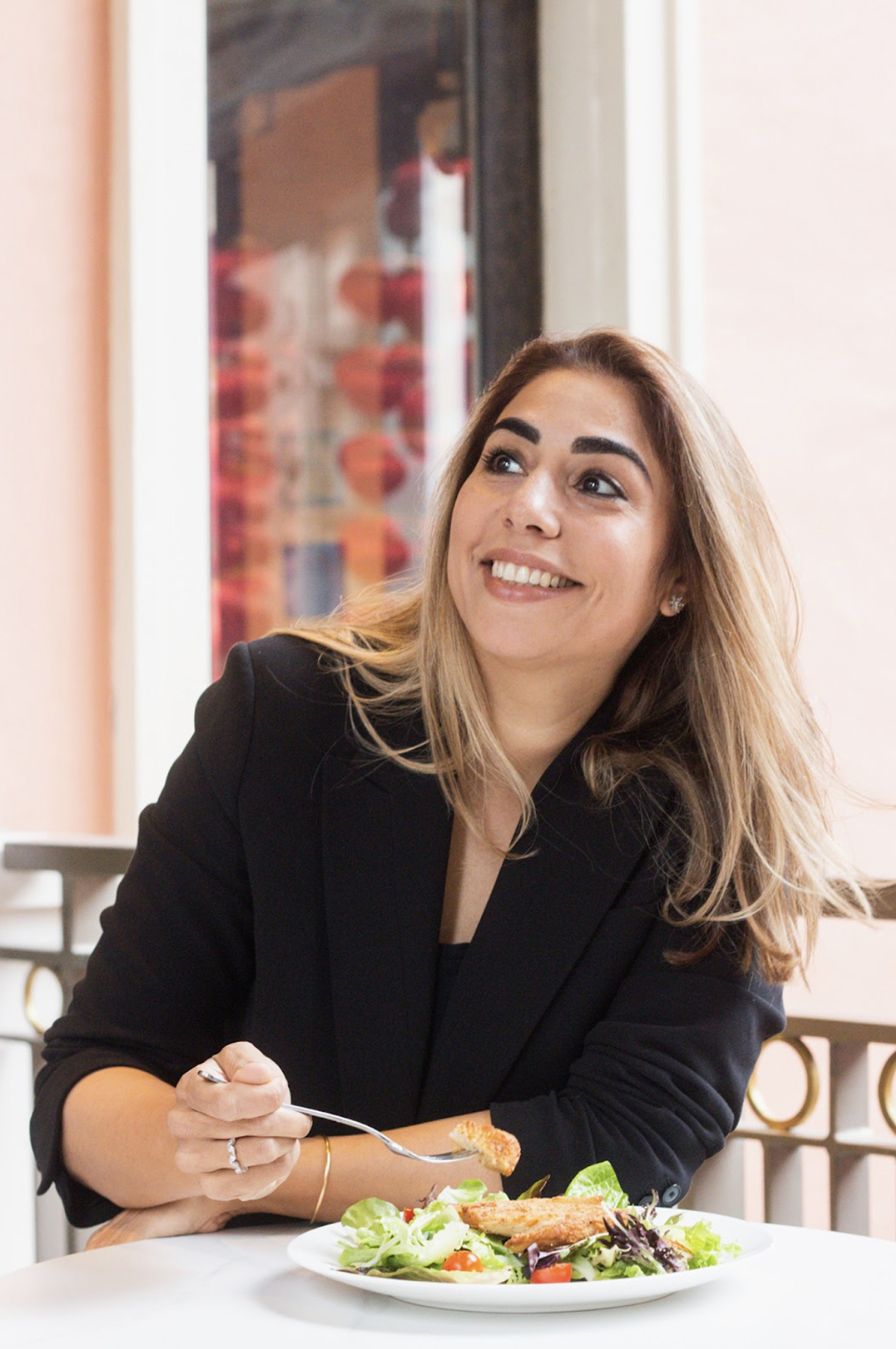May 3, 2023
Sonalie Figueiras runs Green Queen, an online news site in the sustainable food space. She chats to Lara Gilmour about pulses’ branding issue and the untapped potential in India.


Image credit: Melody Martinez
Building a coherent, cohesive narrative about how we will eat in the future is no mean feat. A constantly changing space that’s often misinformed and evolving at breakneck speed, it can be hard to keep up.
Sonalie Figueiras is the founder of Green Queen media, an online news site that represents the largest future of food media by audience and one of the main news sources for sustainable food content globally. Being half Indian and Hong Kong born and raised, Sonalie initially focused Green Queen’s content on Asia. Over the past five years, however, the scope has gradually widened to include the rest of the world and the aim today is to provide a platform for the conversation around the relationship between food production and the climate crisis.
She is quick to point out that, while it does make up a sizable part of the content, Green Queen is not solely focused on the vegan diet. “I’ve never felt like we could just focus on veganism as it doesn’t feel like right lens for us. I didn’t start as an ethical vegan, I came to this world because of health issues and from there started on a research journey that took me to the environmental questions. We want to showcase the innovation, the solutions, the people and the companies that are trying to make sure we have safe, ethical, and sustainable production of food in the future.”
“We want to showcase the innovation, the solutions, the people and the companies that are trying to make sure we have safe, ethical, and sustainable production of food in the future.”
Sonalie highlights the important of inclusive content in a world where the future of food movement can feel increasingly polarized and, at times, dogmatic. “I think that comes from me coming from a mixed background and not having one identity or country or nationality. I've always had to navigate folks’ multiplicity, if you will, and that has informed the way I act as an editor and a curator of content and allowed me to have an open, welcoming platform.”
Accordingly, the Green Queen readership covers a broad, diverse range, spanning continents, ages and backgrounds, from tech-loving Gen Zers looking for positive solutions to Millenials and Boomers engaging with the climate crisis as it relates to their work and personal lives. Sonalie is committed to building a narrative around sustainable diets that not only comprises a multitide of voices but also of solutions. Going against what she sees as the increasing tendency in mainstream media towards binary thinking, Green Queen highlights the need for a diversified, multi-solution approach to the future of food.
As pulses move increasingly into the spotlight in the conversation around sustainable eating, the need to be comfortable with nuance and variety is pertinent. With innovation in value added, and ingredients constantly evolving, making space for pulses in all forms is key: “One of the narratives I want to push is the importance of looking at everything as a big toolbox full of different solutions rather than making the Impossible or Beyond burger this avatar for the whole industry.”
“This idea that there's only two worlds and we need to choose between a whole bean or a beyond Burger is reductive and disrespectful to a consumer,” she goes on. “We are completely capable of complex thought and complex decision making and the same person that can enjoy a delicious whole chana dal can also enjoy an Impossible burger at a vegan fast food joint. We need to live within that nuance.”
Luckily for pulses, the possibilities in processing are infinite and there is no shortage of innovation in that department. What Sonalie does think, however, is that pulses suffer from a major branding issue, particularly when it comes to cooking: “I think that beans and pulses are this amazing, perfect food group that no one is excited enough about.”
“We need to do a lot more to encourage pulse eating. Being half Indian, I’ve fed my son dal three or four times a week since he could first eat and he's an incredibly healthy kid! I don't know why we don't feed more children dal. I feel it's a perfect food but for some reason dal scares most non-Indians in terms of cooking.”
Indeed, most of the world’s healthiest food cultures are rich in pulses, often stemming from long, generation-spanning traditions of preparing beans, lentils or chickpeas as part of a staple diet. “What's really interesting is that if you look at the fiber per capita and sugar per capita numbers of India versus the US, the US has something like 120 grams of sugar versus under five in India and Indians actually consume more fiber than needed, according to USDA guidelines, while the American is fiber deficient.”
The Green Queen is highly supportive of companies such as Heyday Canning and Bold Bean Co., both of whom are working to rebrand pulses as cool, fun and, most importantly, easy.
“I am someone who eats plant-based, home-cooked meals however I recognize that other people would love to eat like me but are less interested in cooking or have less time to devote to coming up with flavorful ways to introduce healthy food to their family,” explains Sonalie. “And so I thought this idea that you could take one of their cans, and have this really sexy fun, flavor profile, and add it with like a rice or a tortilla and have a complete meal for your family, was amazing.”
In English-speaking media, narratives around the plant-based movement are often US- and UK-centric, creating discussions that, Green Queen feels, often overlook the potential in the Asian market to drive change. Nowhere is this more apparent, Sonalie believes, than in India.
Describing her experience at a recent Good Food Institute event in India, she indicates the enormous wave of innovation sweeping the nation. “I was gobsmacked by what's happening in India. The India story is so undersold and undertold. We focus way too much on China and Russia, and not at all enough on India, and the reason for that is India is kind of self-sufficient. In the climate space, there is so much going on. India is on fire and the West has no idea and they don't need us to, because they just have so many people.”
India is not only one of the largest global populations, it also dominates in the production and consumption of pulses worldwide. Sonalie sees the country as a dynamic, vibrant hub of development in future of food and climate innovation, which she puts down to a reinvigorated sense of national pride and a motivated younger population.
“They've got their own scene going on and the youth, the middle class and upper class youth, are really driving an incredible generation of technology and innovation.”
India’s youth, just like in any other country, is at the forefront of advancements in food tech. Where Sonalie sees potential is in value-added; familiar ingredients made into versatile, easy-to-consume products that feel new and have a strong sustainability story.
“I think that what younger Indians want is innovative, exciting, trendy stuff. They want branding. They want convenience. India is super ahead in terms of food delivery apps and grocery delivery apps. It's very similar to China that way. They have a very developed ecosystem of payments and apps.”
“I think that what younger Indians want is innovative, exciting, trendy stuff. They want branding. They want convenience.”
With so many national varieties of climate-resilient crops, there is huge potential for alternative proteins not only for domestic consumption but for exporting to the rest of the world. This, combined with a growing sense of pride around homegrown ingredients and foods that are intrinsically Indian represents, for Sonalie, immense potential for pulses.
“Indian food is also misunderstood in the West. There is no such thing as Indian food. There's like fifty cuisines and hundreds of sub cuisines and different regions and Indians want to celebrate that. And so, if we can somehow build a narrative around pulses in India, I feel like we could really do something cool and scratch that need for pride and nationalism that is really growing amongst young Indians.”
Disclaimer: The opinions or views expressed in this publication are those of the authors or quoted persons. They do not purport to reflect the opinions or views of the Global Pulse Confederation or its members.